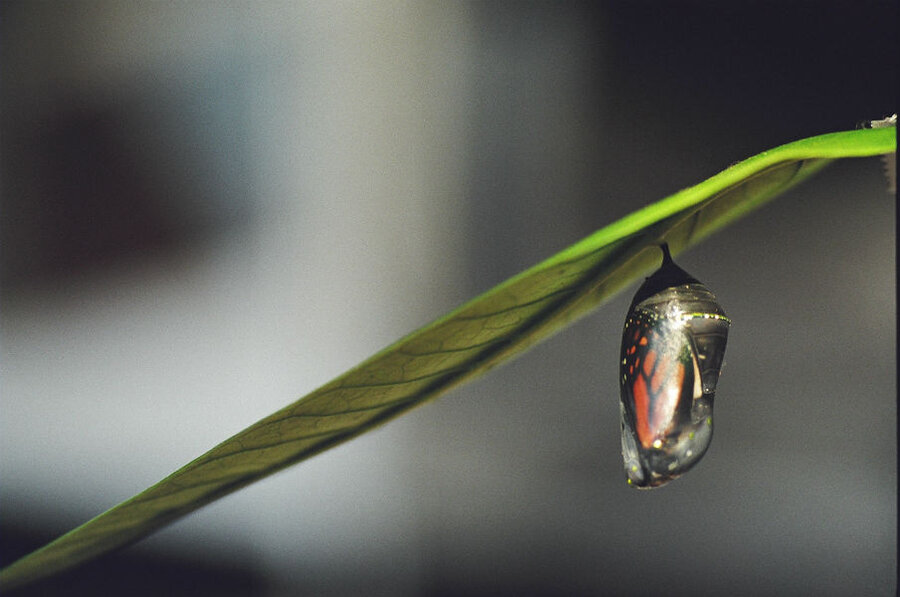What drives the monarch butterfly's 2,000-mile sojourn?
Loading...
It’s a story nearly every grade-schooler knows: Every year, millions of monarch butterflies emerge from their chrysalises in the northern United States and southern Canada. By the time the leaves start to change color in the fall, they take to the skies in clouds of fluttering orange and black and embark on an arduous journey southward to their wintering grounds in the Oyamel fir forests in southern Mexico.
The epic journey undertaken by these North American monarchs is as remarkable as their signature orange and black stripes. None of the other monarch populations found around the world does so. So how did these delicate creatures that weigh just a fraction of a gram each come to undertake a 2,000-mile sojourn?
Until now, many scientists assumed that North American monarchs developed their migratory habits after emigrating from South America, says University of Chicago evolutionary biologist Marcus Kronforst who specializes in butterflies and genomics. That was until he and his colleagues sequenced 101 monarch genomes.
“We thought we had a very clear understanding of the history of the monarch based on what we know about other related species and what we think we know about migration in other organisms,” Professor Kronforst says.
The researchers' genetic analysis suggests that the monarch actually originated in North America as a migratory species and that the non-migratory behaviors seen in South America are the adaptation rather than the other way around. The analysis also suggests that monarchs have been migrating for much longer than previously thought.
“Prior to our work, we were thinking that migration might have evolved thousands of years ago or maybe hundreds of years ago,” Kronforst says. “Now it looks like migration in the monarch or its ancestors evolved millions of years ago.”
That doesn’t mean that monarchs have been making the same exact journey for millions of years. The original migratory path was likely much shorter, from southern US or northern Mexico to southern Mexico. It probably wasn’t until the final retreat of the glaciers about 20,000 years ago that their populations really boomed and began to expand into the northern half of North America.
With this new information, Kronforst and his colleagues now believe that the North American monarch, Danaus plexippus, and their South American counterpart, D. erippus are likely sister species descended from the same common ancestor. At the genetic level, the two species are nearly identical. Comparison of the two genomes can offer some insight into the genetics involved in migratory behavior.
However, it seems that there is more to migration than subtle differences between the two genomes, Kronforst says.
For one thing, not all North American monarchs migrate. In fact, entire generations do not. After overwintering in Mexico, the migrating monarchs begin their journey northward. These are the same individual butterflies that completed the full trek from as far north as Canada; but they are not the same individuals that return to the north and complete the migratory pattern.
"They go from southern Canada down into Mexico, spend the whole winter there and then start coming north again. It's actually the next three or four very short-lived generations that repopulate the US and get the butterflies all the way back up to southern Canada," Kronforst explains.
These short-lived offspring have the exact same genome as their parents. But somehow the 500 or so genes involved in long-range migration are expressed differently in the long-lived and short-lived generations. One significant difference in genetic expression identified by Kronforst and his colleagues results in less collagen, a stretchy connective tissue, in the wings of the long-lived generations than in the short-lived generations. The researchers suppose that the reduced quantity of collagen makes the longer-lived monarchs' muscles more efficient and therefore better equipped to spend months at a time flying southward.
The researchers published their findings in the October 2 issue of the scientific journal Nature.






